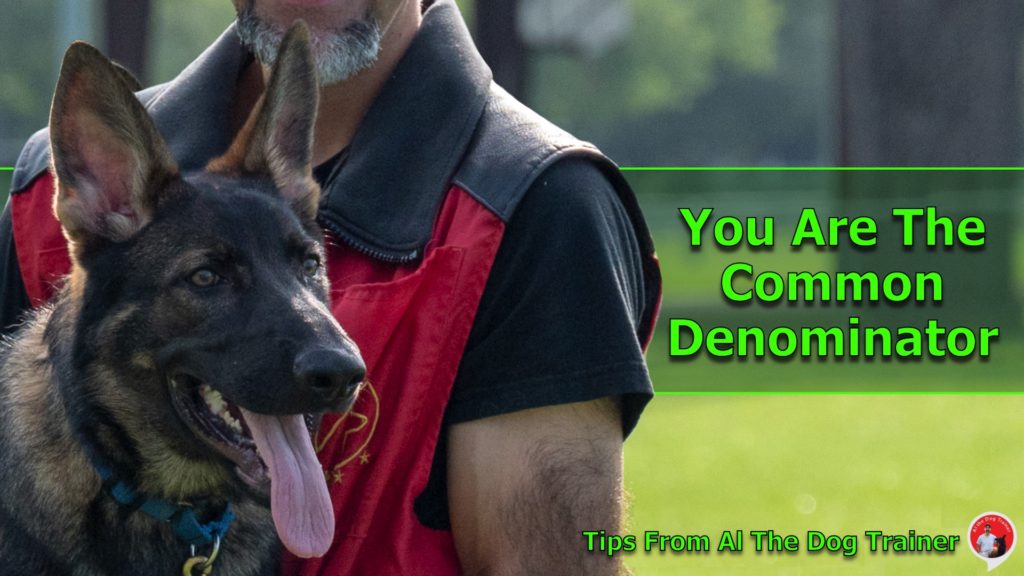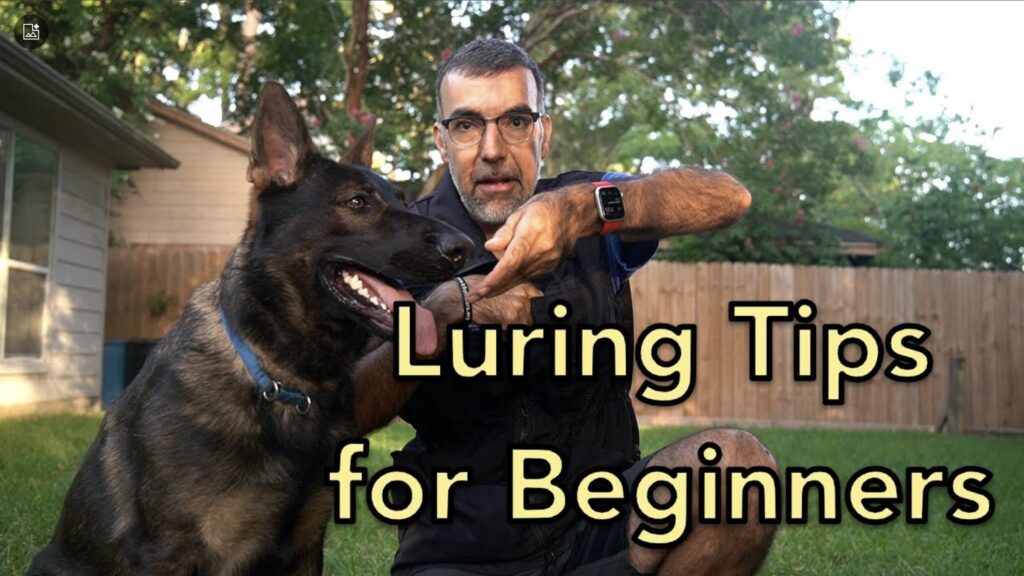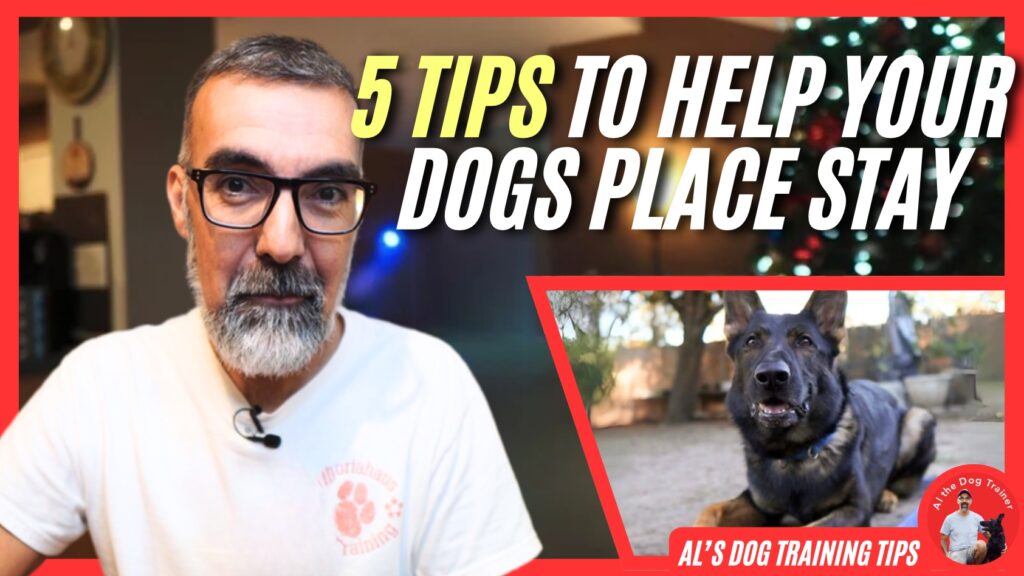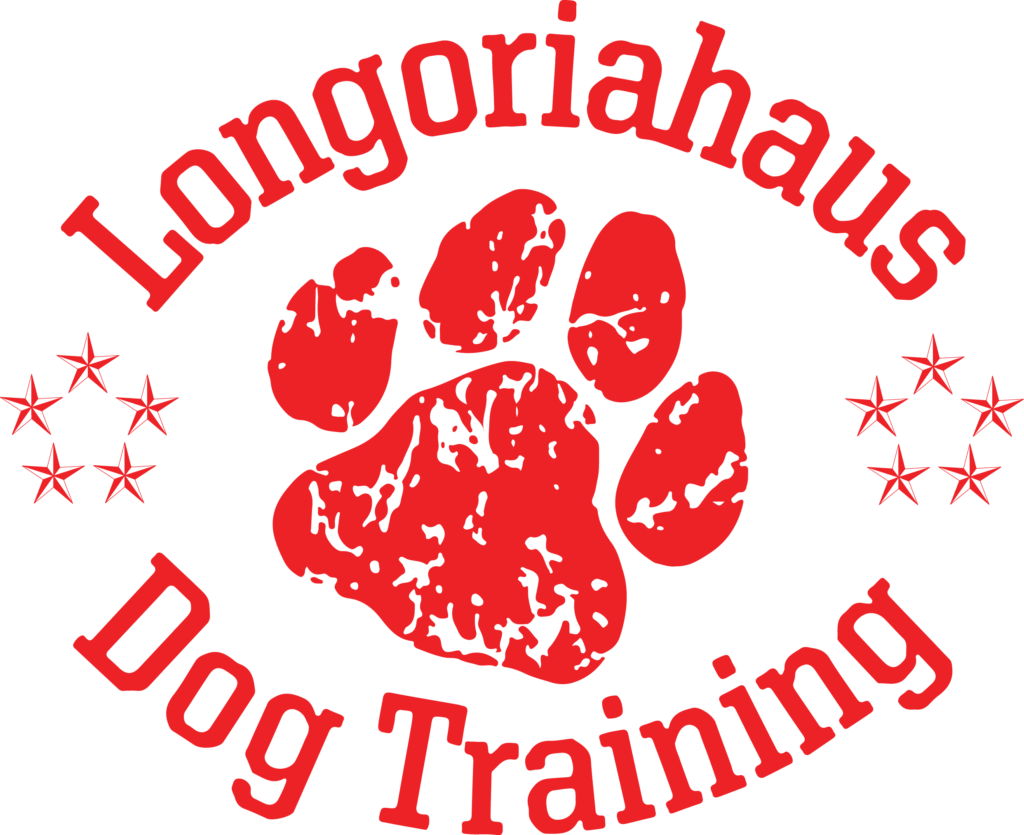
Today’s topic is “you are the common denominator.” So everywhere you go, there you are; you can’t escape it. Now, I’m sure that there are people who have out-of-body experiences and things like that, but in general, you’re the common denominator of your environment everywhere you go. You can’t experience something through somebody else’s eyes. We try to do that with our imagination, and that’s even possible to some degree if you are in virtual reality. But pretty much you’re stuck with yourself.
You are the common denominator wherever you go. So what does this have to do with dog training? Well, it has a lot to do with it. Because anytime folks struggle with their dogs, regardless of the environment, you’re generally the common denominator. In every environment that your dog is either doing great in or is doing not so great in. And sometimes you can see this.
And I’ll tell you one way that I see it almost daily. So many times, people ask me to handle their dogs to demonstrate how to do a particular thing. So when I do that, they see that their dog is behaving very well with me, and then I hand the leash back to them. They try to replicate the exact same thing, and it’s not quite as smooth. And maybe the dog acts completely differently than the way that they did with me.
Consistently Right
So this really speaks about how a lot of times, when we’re going about communicating with dogs, it’s not just getting the techniques right. It’s about getting the techniques consistently right each time they’re with their dogs because we are that common denominator.
And the dogs can really look to us for a source of leadership. Or we can be the thing that’s making the dogs unhinged and making it harder for them to be able to figure out how to deal with the environment. So I want to leave you all with just a few things today. There are four things that I’m constantly asking people to work on. And I’m not talking about the stay, come, heel, and play.
Four Things
I’m asking people to work with their leash, body language cues, how they bait and lure dogs and the timing of their voice. So that way, the dog can understand you. See, as you work on these things and you get smoother with them, then your dog can understand more clearly in any environment that they are with their human. This is what I should do because my human is very predictable in how they’re going to act and the things they’re going to ask me to do. So if you’re looking for somewhere to improve, take a look at those four things.
And even if you’re a seasoned veteran, I would challenge and encourage you to take a look at how some other folks are doing. Maybe using their leash, perhaps not using a leash, how they’re using food, what type of body language cues they’re using, and the timing of the voice. This is for everybody because we can all improve our communication skills when it comes to our dogs.
And if we can make good communication anywhere that we go, we might just be surprised at what our dogs are able to do.
I hope you found this helpful. Remember to visit my YouTube Channel for helpful videos and find more tips like this right here on www.longoriahausdogtraining.com.
Happy Training!





